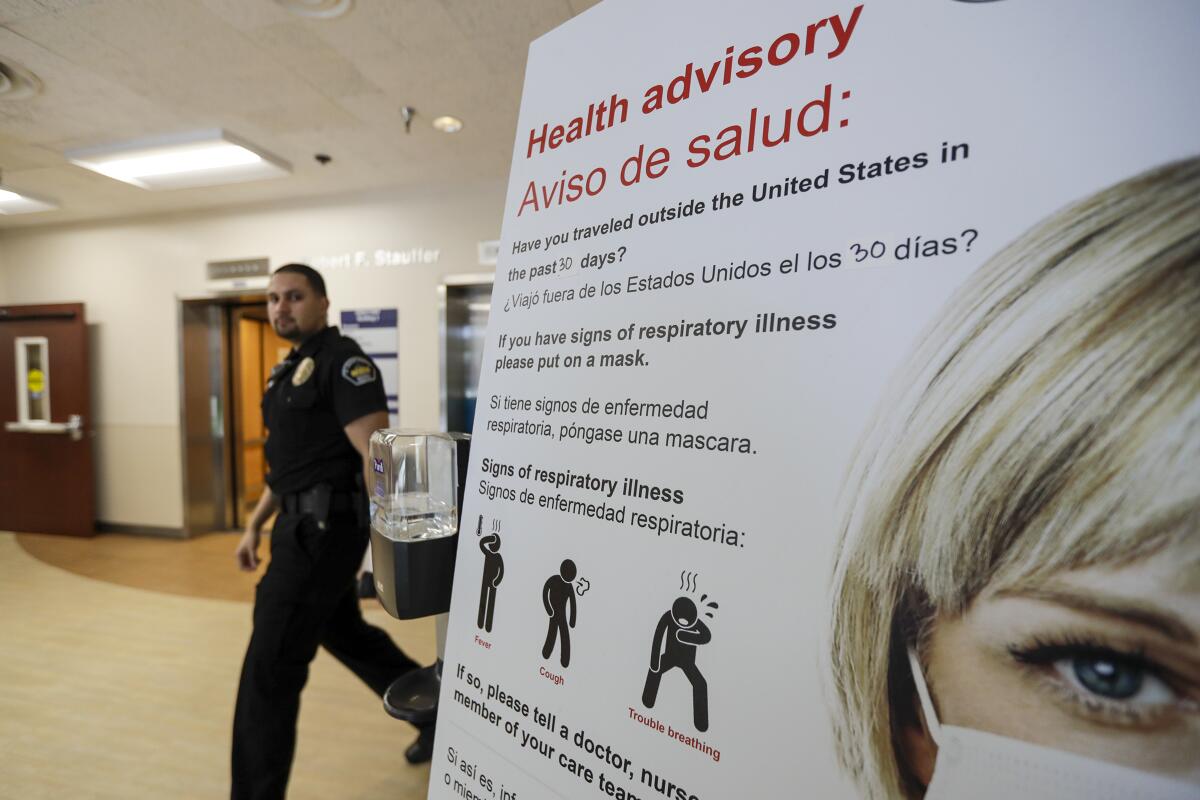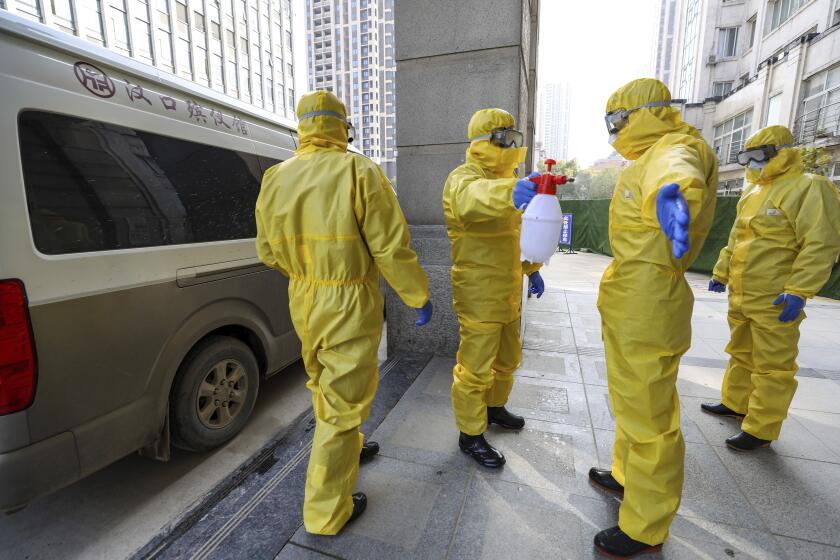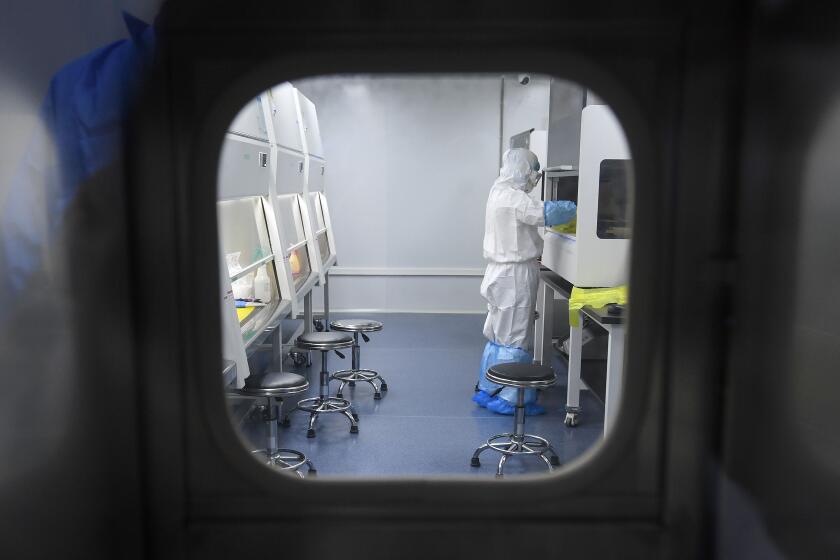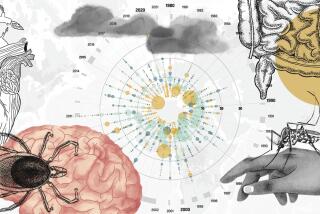Coronavirus may not be slowed down by warmer weather, scientists warn

PHILADELPHIA — Hoping that we make it to warmer weather before the coronavirus possibly arrives in the United States in force?
Don’t bother, scientists say. Unlike with the seasonal flu, the change of seasons may not matter much to the coronavirus.
While it is possible that this virus, like many other respiratory viruses, will not survive as readily in warm temperatures, it will be encountering a “completely susceptible” U.S. population, said Maciej F. Boni, an associate professor of biology at Penn State University.
Hardly anyone in this country has been exposed to the new virus, so there’s been no chance to develop immunity. That means the coronavirus has plenty of opportunity to infect people and get passed along, Boni said.
“We’re not off the hook just because we’re getting to springtime and the warmer weather,” he said.
Officials at the U.S. Centers for Disease Control and Prevention said this week that significant spread of the virus in this country is all but inevitable.
However, it is important to remember that the vast majority of infected people have not suffered severe symptoms, and some have had no symptoms at all. Standard hygiene rules apply. Wash your hands after being out in public and avoid rubbing your eyes and scratching your nose.
Boni, who returned recently from a trip to Vietnam and Thailand, said he was impressed by preparedness measures that had been put in place. Hand sanitizer dispensers have been installed in many office buildings and public places. Signs urging people to wash their hands are ubiquitous. Some public events have been scaled back or canceled.
“This is probably the advice that we’re going to have to follow if the epidemic takes off in the United States,” he said.
It’s the biggest medical mystery on the planet: Just how deadly is the new coronavirus from China?
But for how long? Predicting how a virus will emerge and recede is an inexact science, depending on such factors as how infectious it is, whether it persists in a nonhuman host during the offseason, and human population density and behavior. Temperature is just one factor.
In Brazil, which reported its first case of coronavirus this week, Health Minister Luiz Henrique Mandetta expressed optimism that the current warm temperatures will prevent the microbe from spreading. The Southern Hemisphere nation is in the midst of summer.
“Brazil is a country of younger people and is in the summer,” Mandetta told the news outlet G1. “This is an unlikely period for a respiratory virus around here.”
Perhaps. But the swine flu of 2009 is a cautionary tale, said David N. Fisman, a professor of epidemiology at the University of Toronto. It showed up in New York in April that year, well after the traditional peak of flu season, and by June it was classified as an epidemic. Hundreds of schools were closed.
That was a novel type of flu, so the immune systems of most people were “naive” — had never before exposed. The new coronavirus has a similar opportunity, Fisman said.
“The idea that this will just fade in the summer, never to be seen again is, I think, wishful thinking,” he said.
Yet, for established viruses that cause respiratory illness, the numbers of sick people do tend to rise in the fall and winter. That is thought to be partly the result of children returning to school, along with an increase in indoor gatherings. Some of these viruses also survive more readily in cooler, drier air.
Today, when a deadly virus explodes out of nowhere, geneticists are indispensable players in the international game of whodunit. Here’s how they help.
Speed of transmission is another factor that can cause a virus to ebb and flow. That can happen when a virus makes its way around the world with the changing seasons in different hemispheres. Depending on how fast the virus spreads from person to person, two or three years might elapse between outbreaks in a given country.
Just such a two-year cycle has been seen with a polio-like viral illness called acute flaccid myelitis. Cases spiked in 2014, 2016 and 2018 and are expected to rise once again this year.
Seasonal patterns also are seen in viruses transmitted by mosquitoes. When the winged pests are out in force, the diseases they carry rise accordingly.
Viruses transmitted through exposure to blood or fecal matter, on the other hand, generally are not seasonal, said Penn State’s Boni, who studies influenza and malaria.
Though the new coronavirus may prove to be transmissible during the spring and summer months, public health experts nevertheless would be delighted if it does not show up in the United States until then. Every additional month of delay means more time to prepare and develop vaccines.
The genetic code for the new coronavirus has not mutated much since it emerged in late December. So if a vaccine is developed this year, does that mean it will protect people against the coronavirus next year?
Some vaccines, such as the one for measles, provide long-lasting protection because the genomes of the viruses they fight remain relatively stable. Because flu genomes mutate more rapidly, however, new formulations of the flu vaccine are required every year.
“The measles virus just cannot seem to mutate away from the measles vaccine,” Boni said. “The flu can.”








